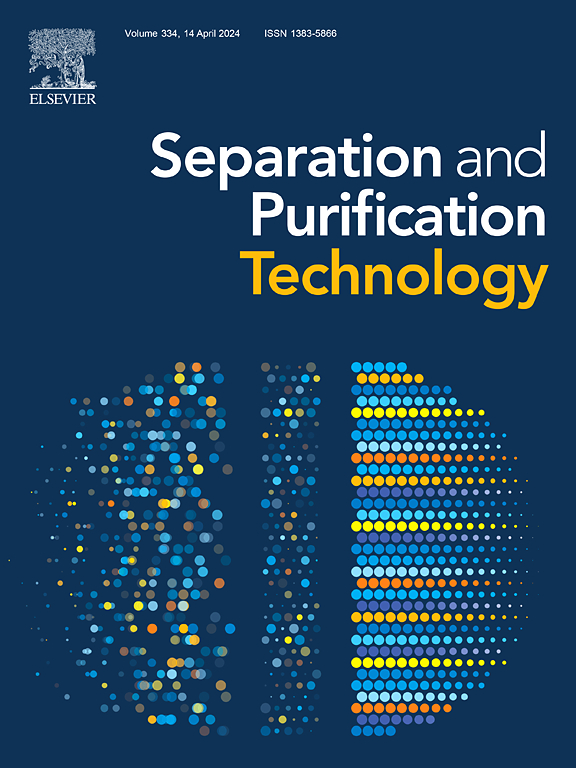Capacitance effect of ZnIn2S4 with delicate morphology control on photocatalytic hydrogen evolution
IF 8.1
1区 工程技术
Q1 ENGINEERING, CHEMICAL
引用次数: 0
Abstract
The capacitance effect of semiconductor photocatalysts for hydrogen production is significant; however, the intrinsic role of capacitance in relation to the morphologies of photocatalysts remains unclear. Herein, we designed three different morphologies of ZnIn2S4 semiconductor material—spherical, bulk, and rod-like—to determine their capacitance. In this study, the small capacitance characteristics of spherical ZnIn2S4 (0.363F/g) enabled photoelectrons to quickly transfer to the surface and participated in the photocatalytic hydrogen evolution reaction, leading to a photocatalytic activity of 159 μmol/h/g. When TiVAlC nanoparticle with Mn+1AXn (MAX) nanostructure was employed as efficient co-catalyst, TiVAlC/ZnIn2S4-S achieved an increased activity of 285 μmol/h/g at 420 nm, which was 1.75 times that of TiVAlC/ZnIn2S4-B and 2.39 times that of TiVAlC/ZnIn2S4-R. This enhanced performance was attributed to the synergistic effect of the high-efficiency semiconductor photocatalyst ZnIn2S4-S with small capacitance and the superior conductivity of the Mxene material TiVAlC.
微细形貌控制ZnIn2S4光催化析氢的电容效应
半导体制氢光催化剂的电容效应显著;然而,电容在光催化剂形态中的内在作用尚不清楚。在此,我们设计了三种不同形态的ZnIn2S4半导体材料——球形、块状和棒状——来确定它们的电容。在本研究中,球形ZnIn2S4的小电容特性(0.363F/g)使光电子能够快速转移到表面并参与光催化析氢反应,其光催化活性为159 μmol/h/g。以具有Mn+1AXn (MAX)纳米结构的TiVAlC纳米颗粒作为高效助催化剂,TiVAlC/ZnIn2S4-S在420 nm处的活性提高了285 μmol/h/g,是TiVAlC/ZnIn2S4-B的1.75倍,是TiVAlC/ZnIn2S4-R的2.39倍。这种增强的性能归因于具有小电容的高效半导体光催化剂ZnIn2S4-S和Mxene材料TiVAlC的优异导电性的协同作用。
本文章由计算机程序翻译,如有差异,请以英文原文为准。
求助全文
约1分钟内获得全文
求助全文
来源期刊

Separation and Purification Technology
工程技术-工程:化工
CiteScore
14.00
自引率
12.80%
发文量
2347
审稿时长
43 days
期刊介绍:
Separation and Purification Technology is a premier journal committed to sharing innovative methods for separation and purification in chemical and environmental engineering, encompassing both homogeneous solutions and heterogeneous mixtures. Our scope includes the separation and/or purification of liquids, vapors, and gases, as well as carbon capture and separation techniques. However, it's important to note that methods solely intended for analytical purposes are not within the scope of the journal. Additionally, disciplines such as soil science, polymer science, and metallurgy fall outside the purview of Separation and Purification Technology. Join us in advancing the field of separation and purification methods for sustainable solutions in chemical and environmental engineering.
文献相关原料
公司名称
产品信息
阿拉丁
Indium trichloride tetrahydrate (InCl3·4H2O)
阿拉丁
Indium trichloride tetrahydrate (InCl3·4H2O)
 求助内容:
求助内容: 应助结果提醒方式:
应助结果提醒方式:


